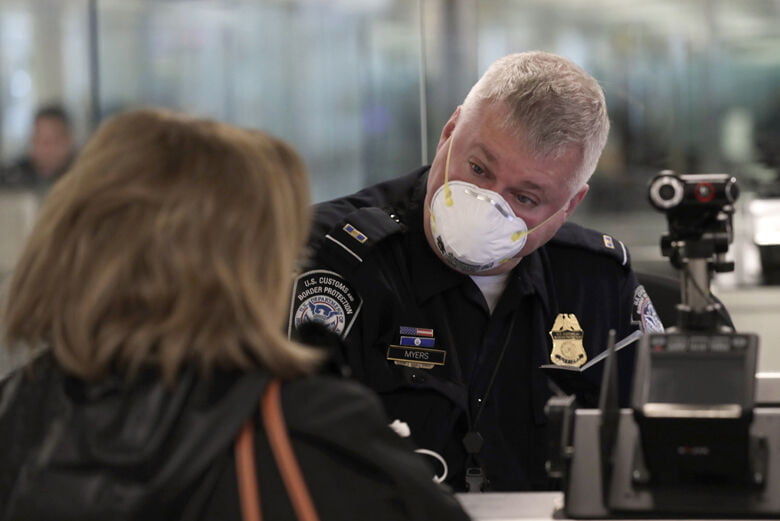by James Durso
Washington Dulles International Airport is for many people in the Washington, D.C. area the “hometown” airport, though it is also a major airport for international business travelers and has welcomed innumerable immigrants who chose to make their life in America.
The airport opened in 1962 and showcases a visually impressive terminal designed by renowned architect Eero Saarinen.
Approaching 60 years of age, Dulles is still a very efficient airport for aircraft operations, but much less so for passengers at a time when the COVID-19 pandemic will likely impose an entirely different set of requirements.
The recovery of air travel may take to 2025 and the airport may be a different place with fewer flights using newer aircraft, served by airlines offering fewer amenities but a focus on safe, expeditious travel with minimal frills. The terminal itself may be less about amenities and an “experience” than about helping passengers get quickly from point A to point B.
How will this happen?
The first priority in aviation is safety and, in a financial downturn, the airport will want to ensure safety is not compromised.
Operating funds will likely be prioritized for upkeep of the runways and taxiways, communications and navigation systems, and the fuel farm that stores over 8 million gallons.
In 2019, over 12 million passengers departed Dulles. If the airport is required to medically screen departing travelers, over 12 million exams must be done quickly and accurately while maintaining social distancing, which is not what an airport terminal is about.
For example, Emirates Airline has started thermal screening of all passengers traveling from Dubai to the U.S.
If something similar becomes standard practice, the travel industry will have to work with Dulles and the Metropolitan Washington Airports Authority to devise best practices to keep unhealthy people off commercial aircraft.
Unfortunately, the terminal layout at Dulles does not easily lend itself to that effort.
A slow recovery of the aviation sector will be bad for the airlines but may allow Dulles time to find a solution that won’t add that increment of time that discourages potential travelers.
The Dulles departure gates are empty, but the airlines haven’t parked the aircraft in the desert. The airlines have a full schedule of cleaning and maintaining the systems such as the engines and landing gear to ensure they don’t deteriorate.
It’s a substantial cost when there’s not much revenue in sight, so given the collapse in jet fuel prices, the airlines may delay the retirement of some older, less fuel-efficient aircraft to save cash.
And whatever the age of the aircraft that future Dulles traveler alights, he or she may find the airlines made some changes, some for financial reasons, some for health reasons, and some of them stuff they always wanted to do but can now blame on COVID-19.
The traveler will note there are no installed entertainment devices, but free Wi-Fi is available. Masks are mandatory, which isn’t an issue if there’s no meal or beverage service.
No food service will reduce costs and flight attendant contact with passengers – now a good thing – and will reduce weight, giving the airlines a fuel saving.
There’ll be fewer frequent flyer awards, as well as fewer award travel seats.
The airlines will strictly limit carry-on baggage to minimize loading times and complexity, and may rigorously enforce the overweight passenger policy, though they may stop reducing “seat pitch” to squeeze in any more passengers.
The airlines may find “cleanest aircraft” is as big a selling point as on-time performance.
Fewer flights will mean less operating revenue for the airport from landing fees, and concession fees from the hotel, rental car agencies, gas station, parking garage and parking lot operator, and food service outlets in the terminal.
If people employed by businesses located at the airport elect to work from home there will be a consolidation of space in the airport office buildings, reducing rental income.
The airport should work with the Transportation Security Administration (TSA) to refine security protocols so medical screening plus security screening doesn’t drive away business.
Without much ado, TSA changed the 3-1-1 liquids rule to allow 12-ounce bottles of hand sanitizer, so the airport should insist on a re-examination of other passenger screening rules.
And there’s always the possibility of hiring a private firm to do security screening.
There are significant operational and financial challenges facing both the airport and the airlines.
Flexibility, innovative thinking, and a “must do” attitude will hopefully prevail.
James Durso (@james_durso) is the Managing Director of Corsair LLC. He was a professional staff member at the 2005 Defense Base Closure and Realignment Commission and the Commission on Wartime Contracting in Iraq and Afghanistan. Mr. Durso served as a U.S. Navy officer for 20 years and specialized in logistics and security assistance. His overseas military postings were in Kuwait and Saudi Arabia, and he served in Iraq as a civilian transport advisor with the Coalition Provisional Authority. He served afloat as Supply Officer of the submarine USS SKATE (SSN 578
The featured photo: Officers with U.S. Customs and Border Protection Office of Field Operations screen international passengers arriving at Dulles International Airport in Dulles, Virginia, March 13, 2020. In response to the coronavirus pandemic (COVID-19) CBP officers have begun wearing personal protective equipment (PPE) as they interact with passengers arriving from foreign countries. Many passengers have also donned PPE to safeguard themselves and others on their travels. (Courtesy CBP/Glenn Fawcett)


